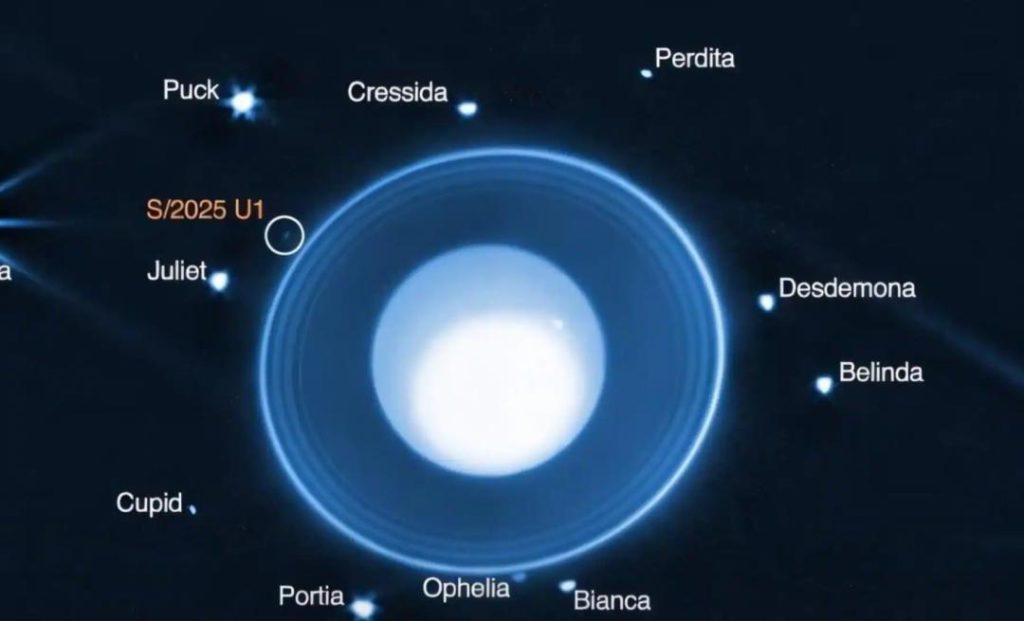
NASA’s Webb Telescope Discovers Tiny New Moon Orbiting Uranus
In a groundbreaking discovery, NASA’s James Webb Space Telescope has identified a tiny new moon orbiting the seventh planet from the Sun, Uranus. The celestial body, measuring just 9.6km in diameter, is the latest addition to the list of 28 known moons orbiting the ice giant. The discovery was made possible by the advanced capabilities of the James Webb Space Telescope, which is designed to study the formation of the first stars and galaxies in the universe.
According to NASA, the new moon is located about 56,327km from the center of Uranus, which is roughly half the distance between the moon and the planet’s rings. The moon’s orbit is nearly circular, which suggests that it may have formed from a massive impact that occurred in the distant past. The discovery takes the total number of known moons orbiting Uranus to 29, making it one of the most moon-rich planets in our solar system.
The International Astronomical Union (IAU) will soon approve an official name for the new moon, which is a significant milestone in the process of naming celestial bodies. The IAU is responsible for approving the names of planets, moons, asteroids, and other objects in our solar system. The process involves a thorough review of proposed names, which must meet certain criteria, such as being unique, easy to pronounce, and derived from mythology, astronomy, or geography.
The discovery of the new moon was made possible by the James Webb Space Telescope’s ability to observe the faint light reflected by the moon. The telescope’s advanced instruments, including its Near-Infrared Camera (NIRCam), were used to capture detailed images of the Uranian system. The NIRCam instrument is capable of detecting the faint light emitted by distant objects, including the new moon.
The James Webb Space Telescope is a successor to the Hubble Space Telescope, and it is designed to study the universe in unprecedented detail. The telescope is equipped with advanced instruments that allow it to observe objects in the infrared spectrum, which is invisible to the human eye. The telescope’s primary mission is to study the formation of the first stars and galaxies in the universe, but it is also being used to study the atmospheres of exoplanets and the composition of asteroids and comets.
The discovery of the new moon orbiting Uranus is a significant milestone in the history of space exploration. It demonstrates the capabilities of the James Webb Space Telescope and its ability to make new discoveries in the field of astronomy. The discovery also highlights the importance of continued investment in space exploration, as it has the potential to lead to new breakthroughs and a deeper understanding of the universe.
In conclusion, the discovery of the new moon orbiting Uranus is a significant achievement that demonstrates the capabilities of the James Webb Space Telescope. The discovery takes the total number of known moons orbiting Uranus to 29, and it highlights the importance of continued investment in space exploration. The International Astronomical Union will soon approve an official name for the new moon, which will be a significant milestone in the process of naming celestial bodies.
Source: https://www.newsbytesapp.com/news/science/jwst-discovers-a-new-moon-orbiting-uranus/story






